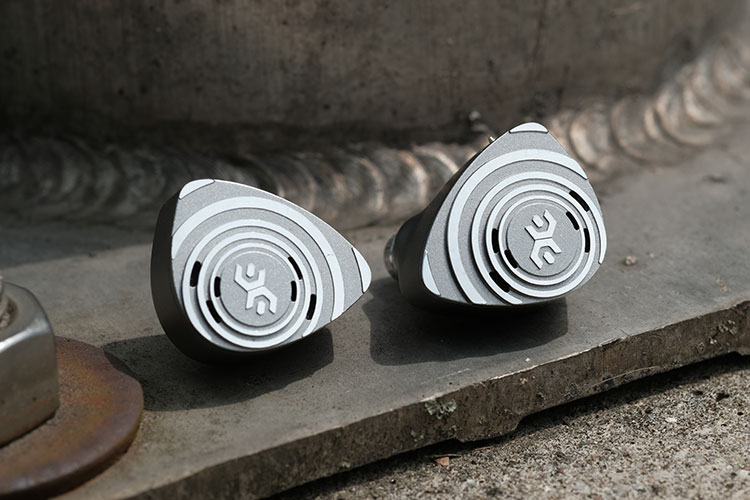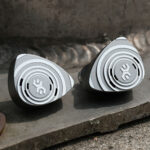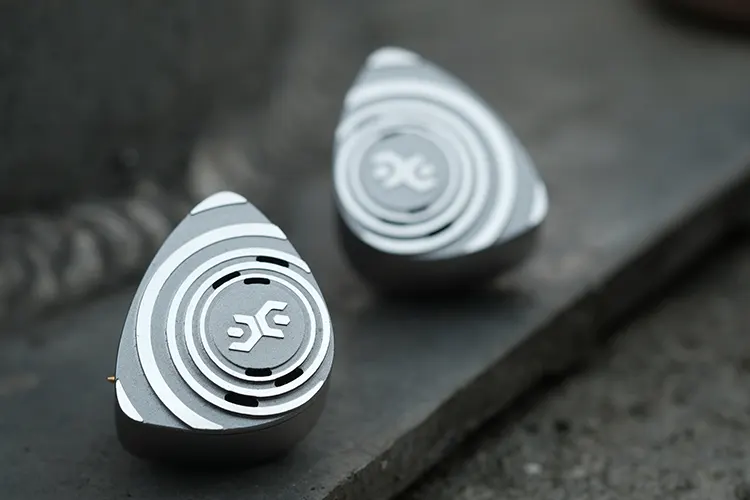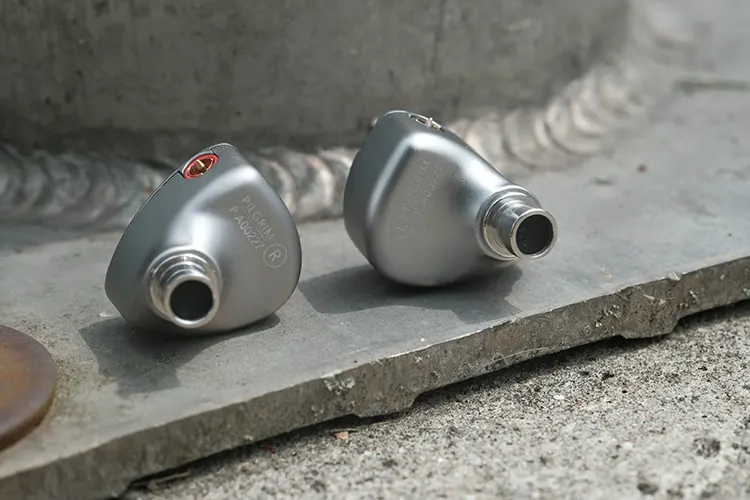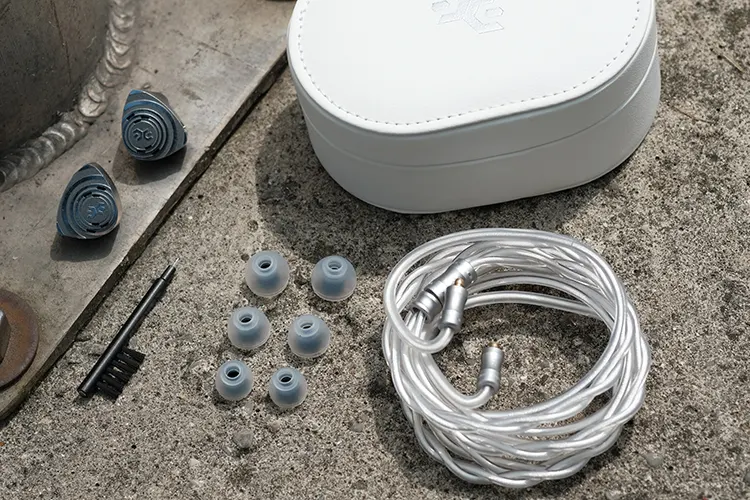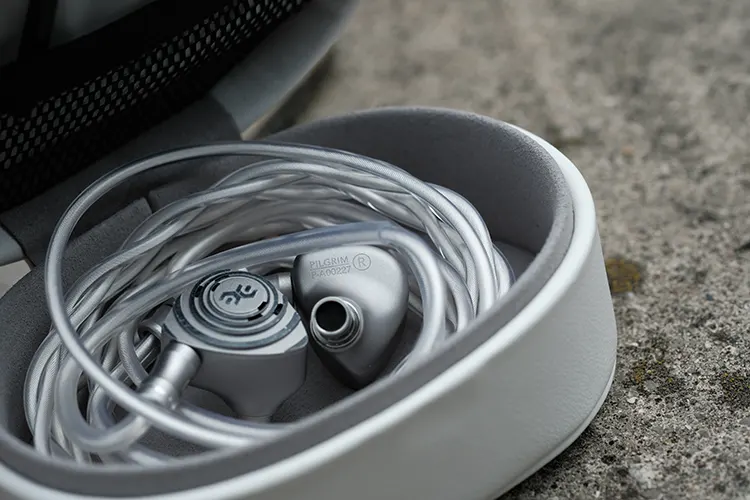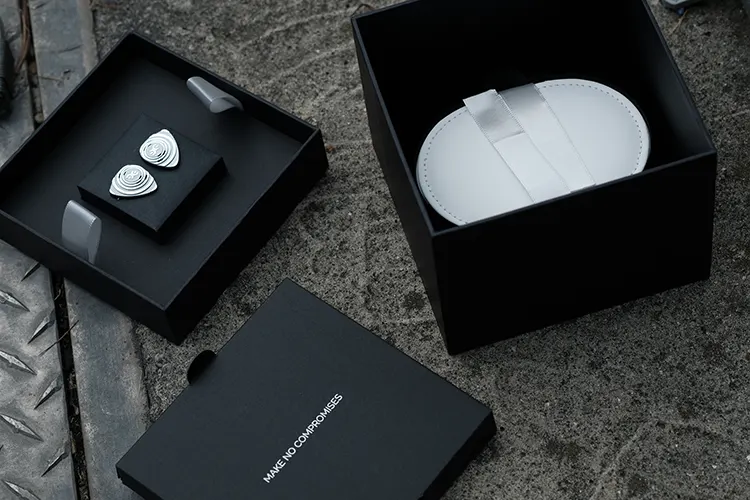Today, Thomas reviews the Elysian Acoustic Labs Pilgrim, which is a new hybrid single 9.2mm dynamic driver and triple BA driver universal IEM. It is priced at $399.
Disclaimer: This sample was sent to me in exchange for my honest opinion. Headfonics is an independent website with no affiliate links or services. I thank Elysian Acoustic Labs and HiFiGo for their support.
To read more about Elysian Acoustic Labs gear previously reviewed on Headfonics click here.
Note that this article follows our current scoring guidelines which you can read in more detail here.
Elysian Acoustic Labs is taking on new ground with the Pilgrim. It is an entry-level model that slots in below the DIVA 2023, and flagship Annihilator 2023 which Marcus reviewed earlier this year.
While it is their entry-level model, Elysian Acoustic Labs ensured it was crafted with the same attention to detail as their other products, using high-quality materials and processes. Their founder, Lee, also tuned it, ensuring the Pilgrim reflected the Elysian house sound.
Containing a hybrid setup with one dynamic driver and three balanced armatures, the Pilgrim is a strong performer in a competitive segment. From my time with it, I understand why the Pilgrim has received so much praise from the community.
Features
The custom 9.2mm dynamic driver within the Pilgrim features Liquid Silicone Rubber (LSR) technology and a Magnesium-aluminum alloy diaphragm. The size and combination of materials allow the driver to extend deep into sub-bass regions while remaining quick, controlled, punchy, and detailed.
For the mids and the highs, Elysian has equipped the Pilgrim with a custom-tuned Sonion 2300 BA for a refined, realistic presentation and a dual-tweeter E50 with a custom 3-way crossover threading all 4 drivers together.
The housings are aluminum with 3D printed internals to keep the weight low and durability high. The choice of stainless steel for the nozzles should also help with durability.
Lastly, the Pilgrim features Pentaconn connectors. While this is my first time using this connector, they seem more secure and robust than MMCX or 2-pin.
Design
The Pilgrim’s striking silver housings pull looks with knoll-inspired ridges that adorn the faceplate. Making them stand out more is a mix of reflective and matte finishes, with six vents dotted around a prominent logo in the center.
The overall shape is quite compact and reminiscent of the Moondrop Aria but larger in every dimension. That said, it’s not much larger.
This is made more impressive given the Aria 2021 contains a lone 10mm dynamic driver as opposed to a 9.2mm dynamic, three armatures, and a crossover, as well as beefier Pentaconn connectors (vs. 2-pin).
Another nice aspect of the design is just how well everything fits together. The nozzles sit flush with the aluminum base, free of any excess glue or poor fitment, with a fine mesh material protecting the three ports underneath from dust and debris.
The faceplates also sit nice and snug without a prominent gap anywhere. While you can still see and feel the seam, it is minimal and unobtrusive and easily bests the fit and finish of some considerably more expensive products I’ve tested, such as the Earsonics Grace Platinum and HIFIMAN RE2000.
The Pilgrim is a handsome, exciting-looking earphone with a quality, price-appropriate build to back it up.
Comfort & Isolation
The Pilgrim is a compact, lightweight earphone with a universal shell design that is comfortable, but only for moderate periods. I found that after 30-45 minutes a short break was needed as the rear edge of the faceplate, which has a prominent edge, touched my ear, and caused a hotspot.
If using the Pilgrim in a stationary position, such as on the couch plugged into my Surface Pro 4 watching videos, or listening to music while doing other things, the wearing time could be extended.
However, when on the move, which people are akin to doing with earphones, the edge would rub against my ear and cause discomfort.
If you have smaller, less Dumbo-like flaps sticking off the side of your head, this might not be a problem. Especially since the inner half of the shell is smooth as butter and conforms wonderfully to the ear.
Isolation was unexpectedly outstanding. I say this because, as mentioned earlier, six vents are adorning the outer faceplate. While they let in outside noise, it is considerably less than other, less well-ventilated earphones I’ve used.
At my current workplace, a warehouse, it can get quite noisy. I only need a small volume increase to block out the chaos and continue listening at my normal volume.
While the isolation is above average, it’s not perfect. If sitting beside something particularly noisy, such as an air conditioning unit, you’ll hear it.
The Pilgrim doesn’t isolate as well as a sealed armature-only unit, but it will beat the average hybrid or single dynamic, or at least most that I’ve tested.
Tips
The Pilgrim ships with a meager selection of tips: just one set in s/m/l sizes. That said, they are Spintfit tips, so some of the best in the business.
I’m not sure what model of SpinFit they are, possibly CP145 or CP155 based on the bore size, or maybe the W1. Regardless, they pair well with the Pilgrim and give the relatively short nozzle extra length should it be needed for a more secure fit.
If wanting to swap out to another style of tip, I found Sony Hybrids nearly ideal. They softened some of the treble sharpness and vocal sibilance, at the cost of increased sub-bass perception.
If the low-end bump is too much for you, Spintfit CP100s might do the trick. They also soften the upper ranges like the Sony tips, but without shifting as much attention to the low end.
Wide bore tips like those from JVC and ADV’s Eartune Fidelity were inconsistent, so I suggest experimentation. Both balanced out the signature thanks to an overall bass reduction, but the JVC’s mids and treble were less controlled, something ADV’s tips managed to avoid.
Stock Cable
Elysian Acoustic Labs equips the Pilgrim with an outstanding cable. At the time of purchase, you can select between a single-ended 3.5mm jack or a balanced 4.4mm termination.
Beneath the clear sheath is a series of silver-plated copper wiring that looks amazing. Peering closely reveals a perfect uniformity to the wind and a thick outer sheath that provides protection.
The hardware is just as nice. The straight jack is matte aluminum with a Coke-bottle-shaped indent that grips well.
Heading up to the y-split we find a compact aluminum cylinder with similar curves to the jack, with the Elysian logo and reflective silver bands above and below. A chin cinch sits just above the y-split and works about as well as a cinch can, refusing to slide out of place, even during intense activity.
Further up we have pre-formed ear guides with an aggressive curve to them. The only other manufacturer I can recall using this shape was Brainwavz.
In my experience, the intense angling of the ear guide works better than any other guide shape to hold the cable securely around the ear. I’m 100% on board with what Elysian is doing here.
From the impressive guides, we have the Pentaconn plugs which follow the same aesthetics as the splitter and jack. While I wish they sat flusher with the housings when inserted, they feel secure and look appealing.
Aesthetics aside, the rest of the cable is top tier too. The memory of bends and kinks is present but minimal, and noise suppression is about the best I’ve come across.
I typically use a chin cinch to reduce cable noise, but here it is unnecessary. This cable transmits very little noise, even when rubbing it right behind the ear, which is extremely impressive.
Packaging & Accessories
Unboxing the Pilgrim is a basic but premium experience. The white exterior box features bold Pilgrim branding on the front with the knoll design on the earpieces reflected on top.
Removing the lid, we get straight to business with the earpieces on display. Two ribbons are present on either side and are used to remove the first layer.
Before we go further, I want to point out a potential flaw in the design. The Pentaconn connectors stick out just far enough to press into the small cardboard box the earpieces rest in.
I worry that if there is enough shock during transit, they could be bent given the way they rest. The earpieces are also absurdly difficult to remove from the box, and I suspect most will rip it apart to get to them.
Back on track, after lifting out the first layer we find another slim cardboard box with “MAKE NO COMPROMISES” written on it. Inside is a cleaning cloth, warranty card, and simple information pamphlet.
Removing the second layer you are greeted by a leatherette carrying case, lifted out by another ribbon. Inside are SpinFit ear tips in s/m/l sizes, and a cleaning tool.
This is an impressive presentation, albeit one that could use some minor adjustments to the way the earpieces are stored. Additional ear tips in various styles wouldn’t hurt either.
Sound Impressions
Summary
Elysian Acoustic Labs has made a vibrant, technically impressive earphone with the Pilgrim.
It has a distinct sub-bass bias thanks to the impressive extension provided by its unique dynamic driver, and strong upper treble that gives the Pilgrim a bright, energetic profile.
Thankfully, the midrange is forward enough to stay in the mix, allowing vocals to stand toe-to-toe with the rest of the signature.
This signature is tonally accurate and realistic, though vocal sibilance and treble sharpness can cause fatigue during longer listening sessions and at high listening volumes.
Bass
Pilgrim’s low end is strongly emphasized, but the sub-bass bias and moderate mid-bass thickness keep it from overpowering the listener and dominating the experience.
While it would have been acceptable to expect reduced technical competence due to the abundance of low-end, that is not the case.
The driver remains quick with good control during busy passages and is rife with texture and detail that puts other bass-heavy models on the back foot. There is plenty of punch, backed by the steady, low rumble of a confident sub-bass presence.
The moderately emphasized mid-bass gives the signature a welcome layer of warmth and weight, without thickening up the presentation so much that it negatively affects the mid-range.
Elysian’s LSR driver is wonderfully tuned and provides a top-tier bass experience that could easily compete in a higher price bracket.
Mids
Sonion’s 2300 midrange armature is doing work in the Pilgrim. An upper midrange bump helps ensure the mids are not overpowered by abundant bass and the striking treble region.
The most impressive aspect of the presentation is just how clear and articulate instruments and vocals are. Every detail and nuance are preserved and audible, though a tad more warmth would be welcome even if it reduced clarity a smidge.
Notes tend towards a leaner presentation, but this brings out and supports the impressive amount of detail available. It also highlights occasional sibilance and the unforgiving nature of the Pilgrim’s presentation of tracks mastered with a hot midrange.
Treble
While the Pilgrim’s technical presence in the treble is impressive, the treble presentation is the weakest part of the tuning. Specifically, a strong brilliance region spike gives the Pilgrim plenty of air and shimmer but at the expense of listening fatigue.
If unbothered by this, listeners will be treated to an impressive amount of detail with shockingly snappy attack and decay qualities that help ensure note congestion isn’t an issue. Instruments are given plenty of sparkle and the presentation is usually quite smooth and refined.
Those moments where it falters display a mild splash that can be distracting, especially given how good the presentation usually is. While the culmination of these qualms may sound like a poor showing from the Pilgrim, that’s not true.
It is simply that the Pilgrim is consistently good to the point that when these flaws do appear, they draw more attention than less consistent earphones.
Staging & Dynamics
The staging qualities of the Pilgrim provide an immersive experience. The sound stage is wide and deep with an airiness that encases the listener.
The default vocal positioning is placed just beyond the inner ear which helps provide a solid basis for sounds to spread well off into the distance. It also allows vocal performances to close the distance and provide a more intimate experience when the song demands it.
Channel-to-channel movement is crisp and precise, replicating nuanced movement without vagueness or off-center inaccuracy. The stage size and slender note presentation also help keep tracks properly layered and instruments separated and trackable when you focus on them.
I feel like I’m saying this in most reviews lately, but if you wanted to use the Pilgrim for gaming, you’d have a good time. The precision provided for tracking specific sounds can give you the edge in competitive moments, especially shooters where sound plays a vital role at higher levels of play.
Click on page 2 below for my recommended pairings and selected comparisons.

